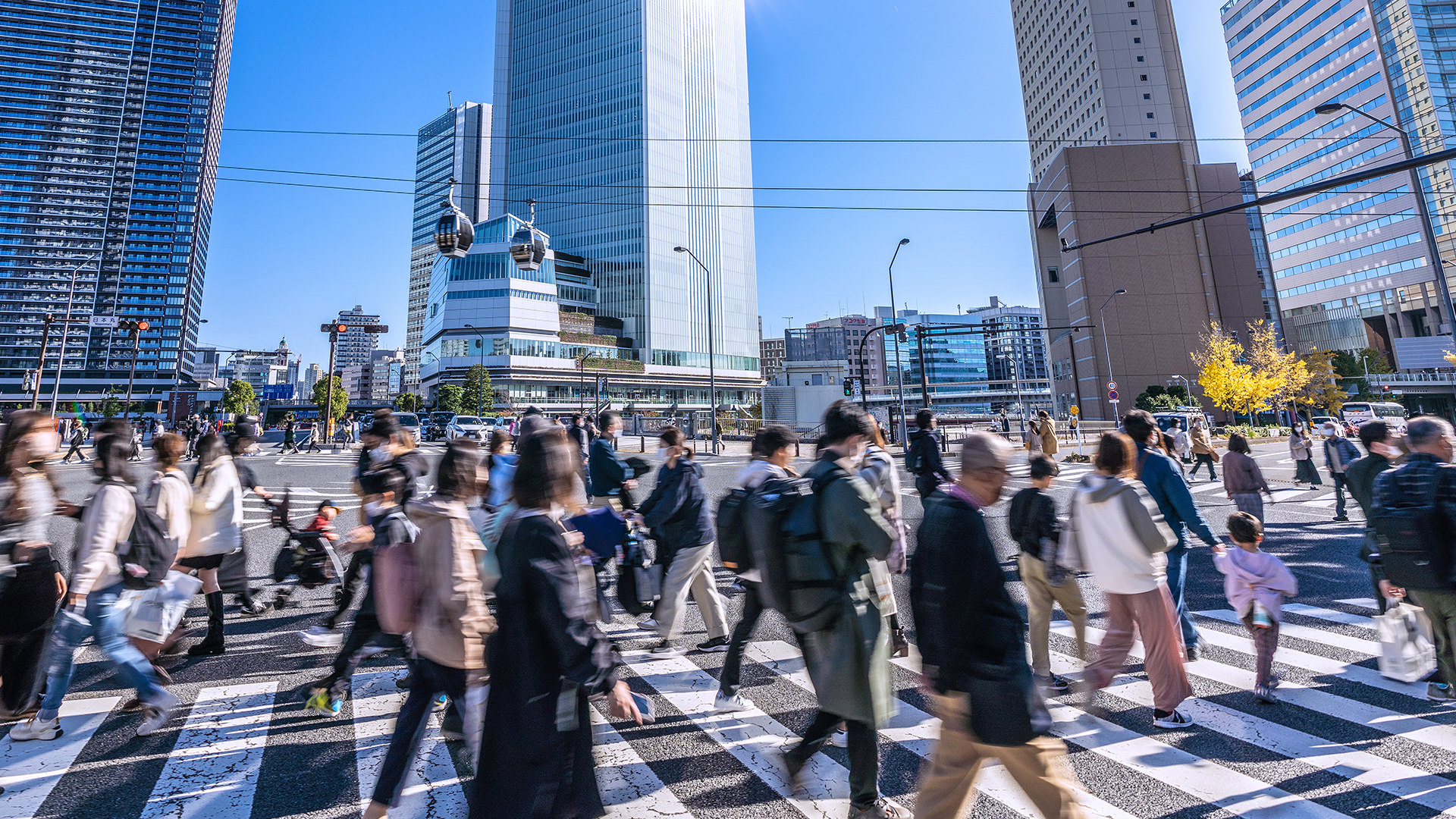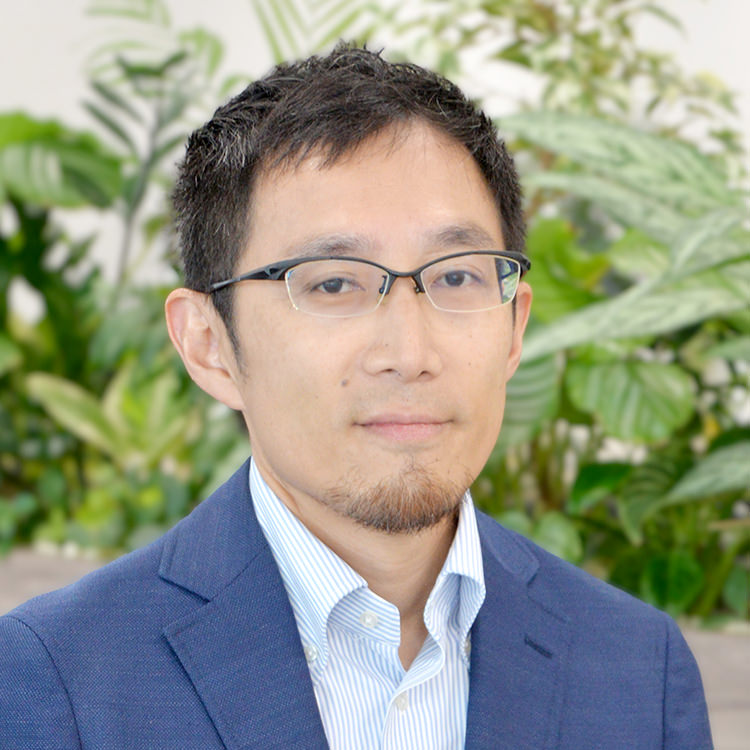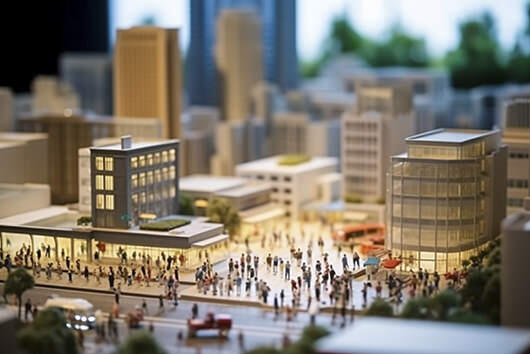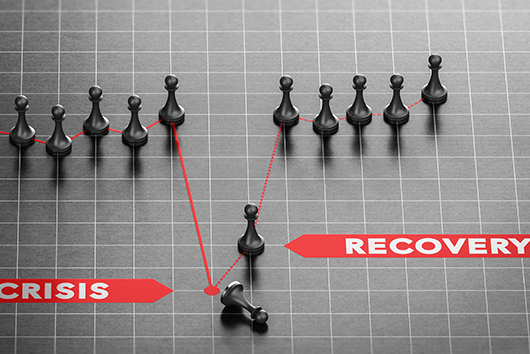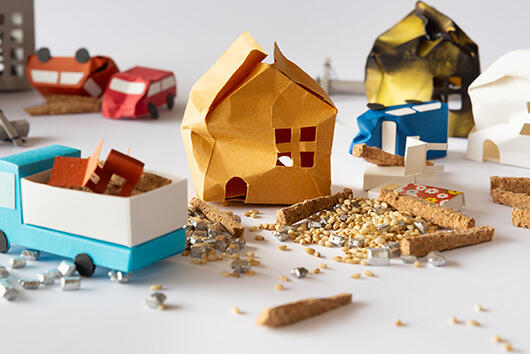In August 8, 2024, the Japan Meteorological Agency (JMA) issued a Nankai Trough Earthquake Advisory (warning of a massive earthquake) following a magnitude 7.1 earthquake that occurred in the Hyuga Sea, Miyazaki Prefecture. This event reminded us once again of the national-level disaster that is said to be "coming someday". Once a major disaster occurs, we cannot rely on government support alone. This is why area resilience is now attracting attention through PPP and collaboration among companies. We interviewed Shinji IIDA, General Manager of Watershed Disaster Prevention Sec., Disaster Prevention Dept., Digital Service Div. about area resilience and what kind of preparations are necessary.
INDEX
- What is area resilience?
- What does the area refer to?
- Understanding risks in terms of areas makes them your own issue
- What should we do specifically to build area resilience?
- What PACIFIC CONSULTANTS is doing to build area resilience
What is area resilience?
When faced with a major disaster, how can we maintain sustainable development as a country? A key phrase that has emerged is unified efforts at an "area" level.
Area resilience means "understanding the risk of a national disaster and the responses that will be required in the future, preparing to be able to adapt as an area even if severe damage occurs, and taking action by each stakeholder to ensure sustainable development through early recovery and reconstruction."
It is clear from past experience that when a huge disaster such as the Great Hanshin-Awaji Earthquake or the Great East Japan Earthquake occurs, public assistance such as emergency rescue and life-saving activities and emergency material support by the government cannot function as necessary or sufficient. Therefore, it has become necessary to promote self-help and mutual aid as a community in conjunction with public assistance. This self-help and mutual aid is centered on the efforts of local communities to protect lives and livelihoods.
Currently, the expected mega-disasters, such as the Tokyo Metropolitan Earthquake and the Nankai Trough Earthquake, include urban areas where economic activity is highly concentrated, coastal areas where large factories are concentrated, and regional core cities where these are mixed with residential areas. Area resilience is a concept that includes traditional disaster prevention by local communities, but it cannot be fully understood by itself. For example, even if a factory is not damaged when a disaster occurs, workers cannot be secured if the surrounding residential areas are devastated, and even if the supply chain that supplies raw materials and parts is damaged, the factory cannot operate. Conversely, even if the house is not damaged, if the workplace, school, or shopping district is damaged, it is impossible to live, and there have been cases where people have no choice but to move to a distant place where relatives live.
Disasters cause people to move or change schools, and once life in a new place gets on track, they often have difficulty returning to their original place after reconstruction. Disasters occur regardless of administrative boundaries, so area resilience is a concept that aims to grasp risks in terms of various areas that share a common destiny in the event of a disaster, and to prepare for disaster prevention, mitigation, and recovery and reconstruction as an area.
What is needed now is disaster prevention, where each of the diverse stakeholders in an area who work together across organizational boundaries in peacetime to revitalize the region and develop the economy considers disaster risk and disaster prevention as their own concerns, and works to build resilient towns and people based on mutual understanding and cooperation.

What does the area refer to?
Areas that can be treated as area resilience can be categorized in various ways, such as river basins, floodplains, industrial and economic clusters, large-scale development areas, industrial parks and related areas, etc. For example, in river basins, not only are measures such as levee construction and dam construction/restoration required, but all stakeholders, including urban areas, farmland, and forest areas, are also required to work on flood disaster prevention measures. In particular, companies within the river basin are expected to expand rainwater storage functions, promote relocation from land with high flood risk, and develop flood prevention measures and BCPs for factories and buildings. By promoting these overlapping efforts, damage reduction and early recovery/reconstruction for the area will be achieved.
In addition, terminal stations in large cities, event venues with a capacity of tens of thousands of people, universities, shopping centers, industrial parks, and their surrounding areas can be considered as one area. Rather than addressing disaster prevention on a station or facility by itself, it is more effective to have stakeholders cooperate with each other as an area that shares a common destiny, including connected office buildings, transportation facilities, adjacent commercial facilities, and event facilities, to develop disaster prevention infrastructure and take measures for people who are unable to return home.
Understanding risks in terms of areas makes them your own issue
The government estimates that if a Nankai Trough earthquake occurs, the Pacific coast will be hit by a violent earthquake of magnitude 7 and a giant tsunami of over 10 meters, and in the worst case scenario, the death toll will exceed 320,000 people and the economic damage will exceed 220 trillion yen (data published by the Cabinet Office). However, it is not easy to take these figures as something that concerns you personally. Damage estimates are important for the government, which must grasp the overall picture, but in order to make disaster risks your own, it is easier to imagine them by scaling them down to your own size and range of activities. For example, when your child is walking along the outer wall of a temple on his way to school, or when you are on a Shinkansen train on a business trip, thinking about when and where a natural disaster will occur, who you will encounter it with and what you will be doing, and how it will affect your life and work will help you imagine the damage. Furthermore, by expanding this to an area, you can imagine the balance between the number of victims and the number of supporters, and you can realize that there are limits to the government's life-saving and rescue activities and detailed information provision.
In addition, understanding disaster prevention by area also brings great value to pre-reconstruction. Pre-reconstruction is based on the premise that a huge disaster will cause catastrophic damage, and is not bound by conventional preconditions such as the inability to widen roads due to adjacent houses, but instead considers how to develop a town based on the inherent characteristics of the area before a disaster occurs. When consideration begins after a disaster, for example, there may be conflicts between people who want to move to higher ground and people who still prefer to live in the place they are used to living in, and reconstruction may not proceed smoothly. By drawing up the desired image and reconstruction story for each area in advance, I think that local engagement will increase, and even if catastrophic damage occurs, people will not have to relocate far away, and they will be able to make an all-out effort to quickly recover and rebuild.
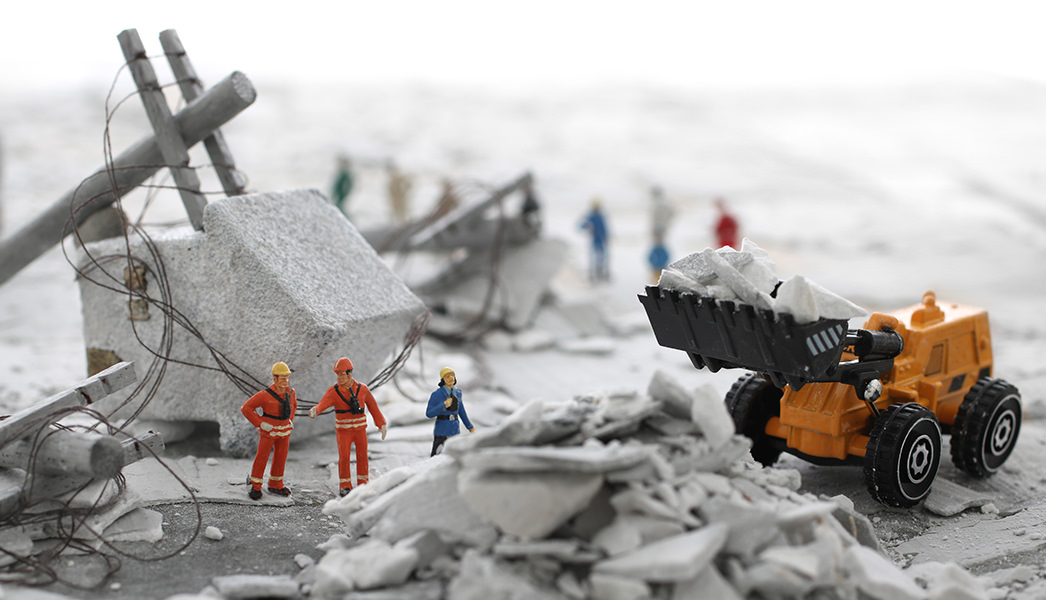
What should we do specifically to build area resilience?
When considering disaster prevention in the context of an area, it is companies that support the local industry and economy that play a major role. The national Basic Disaster Prevention Plan also lists three roles that companies should play in the event of a disaster: 1) ensuring the safety of employees and customers, 2) maintaining economic activity, and 3) contributing to local residents. In the first place, companies are obligated by the Labor Contract Act to take care to ensure the safety of workers' lives and bodies, and this also applies in the event of a disaster. If an employee is harmed due to failure to take disaster prevention measures, this will be a violation of the duty to take safety precautions, and the company will be liable for damages to the employee. It is the company's duty to stock up on drinking water, food, disaster toilets, blankets, etc. in case a large-scale disaster occurs and employees cannot return home safely.
In addition, allowing people to stay safely inside the company and limiting the number of people walking home will increase the safety of the area, in the sense that it will prevent situations such as large numbers of people stranded at terminal stations trying to get home or walking out onto the roadway. In addition to formulating business continuity plans (BCPs), creating disaster prevention manuals, stockpiling disaster prevention supplies, and conducting evacuation drills, companies are required to consider how they can contribute to the local community, and to clarify in advance what kind of damage is likely to occur in the area and what role their company will play in mitigating that damage.
In fact, event halls and large commercial facilities that can accommodate large numbers of people need to ensure the safety of tens of thousands of people in the event of a disaster. If people rush outside to return home, the surrounding area will become overflowing with people, creating a dangerous situation. This cannot be done without cooperation between the government and commercial facilities as a whole area.
Additionally, there are what are known as "company towns" in regional cities in Japan. These are areas where Headquarters and major factories are concentrated in one town, along with many related companies, and most of the residents are connected to those companies. If a disaster occurs in this area and business stops, it will naturally spread to related and partner companies, threatening the lives of the entire region. Restaurants, entertainment, and commerce will lose customers and service providers, and education and medical care will also find it difficult to continue. In this company's BCP, it is also necessary to consider the entire area as its own concern.
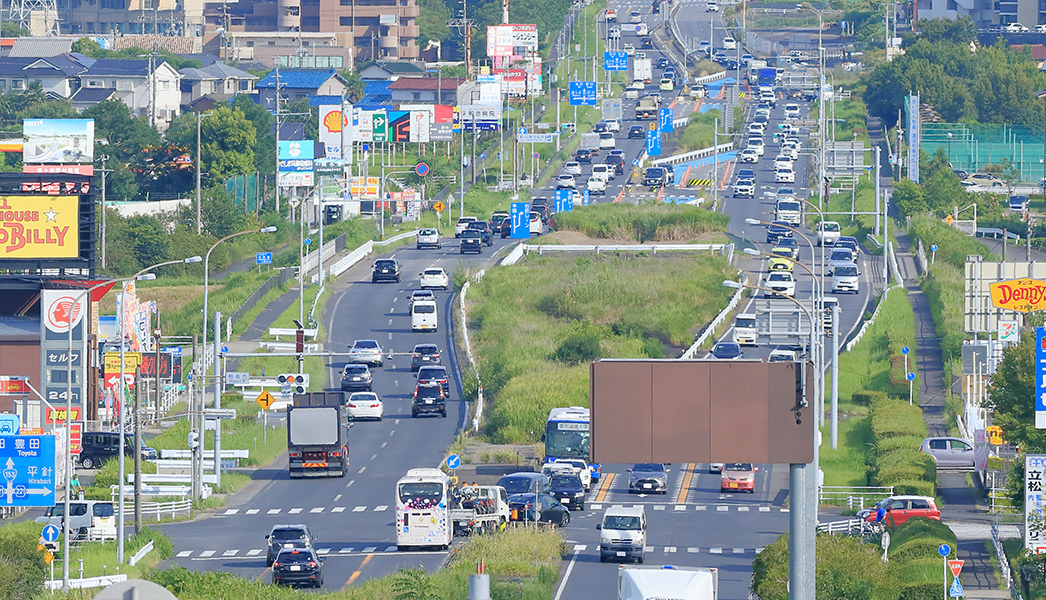
When Typhoon No. 7 approached in August 2024, the Tokaido Shinkansen was partially suspended. Some people said that "the typhoon's actual course shifted and it was a false start" and "they should have waited until the last minute to run the trains," but from the perspective of area resilience, it was a worthwhile decision. Not only did it ensure the safe operation of trains and the safety of passengers, but the announcement of the planned suspension had a ripple effect of preventing people from coming to stations in the first place, preventing people from traveling to vulnerable cities, and temporarily closing facilities in areas expected to be affected by disaster, thereby playing a role in reducing people's movements.
The magnitude of disaster risk is determined by multiplying typhoons and floods (hazards) by people and property (exposure), and low response capabilities (vulnerability). In other words, risk can be reduced by preventing people from gathering in dangerous places. In that sense, this was a very effective initiative. Rather than viewing it negatively as a "strike-and-miss," I think we need to foster a positive awareness of evaluation.
What PACIFIC CONSULTANTS is doing to build area resilience
1) Visualize risks and responses and make them your own issue
Area resilience begins with each stakeholder having a realistic image of what will happen in an area if a huge disaster occurs, the "image of damage" of how it will affect business activities, and the "image of response" of what kind of disaster response and recovery activities will be required in response to it. Huge disasters occur over a wide area, and the damage will have a complex chain reaction. Therefore, it is necessary to move away from the idea of disaster prevention activities being carried out at the unit of one company, one facility, or one person. It is necessary to imagine the image of damage and response for the entire area, which is a collective entity that will be affected by multiple simultaneous disasters and should cooperate with each other.
Even for companies, the risks that a huge disaster poses cannot be made clear from the perspective of a single company. In a review of the BCP at a large factory that we cooperated with, the initial plan was for lifelines to be able to be restarted in two weeks. However, when the damage estimates around the factory were used to visualize the disruption of transportation, the obstacles to procuring materials and equipment for recovery, and the possibility of external support, and a timeline for recovery was drawn and considered, it was found that it would take at least two months for lifelines to be restarted. In order to create an effective early recovery plan, it is important to check the status of the transportation infrastructure and the support system for recovery from the damage estimates around the factory, and to take a bird's-eye view of the area. However, while the damage estimates for earthquakes published by prefectures show damage figures for each administrative unit, it is difficult to imagine the impact on business or the area of one's own capabilities.
In this respect, PACIFIC CONSULTANTS, which has been working on numerous disaster situation surveys and recovery and reconstruction efforts, can demonstrate great strength. From the perspective of the occurrence of natural disasters to the business impact, disaster response, wide-area support, and recovery processes, we can create hypotheses about damage and impacts by asking, "Can we imagine this too?" and proceeding while asking questions and making them visible, which leads to drawing realistic scenarios of "damage images" and "response images". Furthermore, our company has many engineers with specialized knowledge of floods, landslides, storm surges, earthquakes, tsunamis, volcanoes, etc., as well as detailed analysis of the impact of climate change on water disasters, which have become increasingly severe in recent years, and we also perform easy-to-understand simulations. Damage to facilities and equipment can also be rigorously estimated by specialized engineers in structure, architecture, equipment, and energy. Large-scale factories and terminal stations require coordination within many related departments and organizations just within the premises. In order to respond, it is also necessary to build cooperative relationships with stakeholders in the surrounding area. By joining as a coordinator, we aim to promote the personalization of risks and responses, and to make it an independent effort in the area.<Click here for our water disaster risk consulting services for factories>
2) "Human resource development" to support disaster prevention and sustainable development in the area
We also provide BCP training and drills for company personnel (factories) and school staff, as well as disaster prevention education for elementary school students. Raising awareness among children in particular is an important element of area resilience. They themselves learn about the characteristics and history of the area, become interested in it, and are able to behave in the area as adults with high community engagement and disaster prevention awareness. Recently, by using XR (cross reality) technology to experience disaster phenomena, people have become more motivated to participate in disaster prevention learning as if it were their own problem. We believe that increasing area engagement in this way is also an important element in strengthening area resilience.
Furthermore, we are also working on DX (digital transformation) to improve disaster responses. In order for stakeholders in the area to cooperate in disaster response, it is necessary to quickly and efficiently grasp the situation anytime and anywhere, and to respond together after mutually understanding the risks and damage occurrence situation. This is where drone facility monitoring and disaster response support systems come in handy. This system has a training mode and can also be used for training and education.
PACIFIC CONSULTANTS would like to work with local people to strengthen the resilience of watersheds and regional areas, based on the consulting and digital services it has cultivated over 73 years of civil engineering and disaster prevention technology.



